Common Morel / Spring / Edible
Prepare to embark on a gastronomic journey like no other as we unravel the extraordinary qualities of the Common Morel, scientifically known as Morchella vulgaris.
In this blog post, we invite you to savor the unparalleled flavors and unique textures offered by this prized edible mushroom. With its distinctive honeycomb-like caps and earthy aroma, the Common Morel stands as a crown jewel among mushroom enthusiasts and renowned chefs alike. Join us as we delve into the habitat, identification, and foraging techniques to uncover the secrets of finding these culinary treasures. From gourmet sautés to lavish risottos, Morchella vulgaris elevates dishes to new heights, providing an unforgettable epicurean experience.
Let’s celebrate the exquisite delight of the Common Morel, and unlock the full potential of its culinary wonders, as we embrace the rich flavors that nature so generously bestows upon us.
Scientific Name
Morchella vulgaris
Common Names
Common Morel
Family
Morchellaceae
Habitat
They are saprotrophic, living off dead plant matter. But are also thought to have a symbolic relationship with trees too.
Description
A delicious and much sought after fungus, they are not overly common in the UK. They can be hard to distinguish from other Morel species. They seem to prefer alkaline soils and are most often found in woodlands, gardens, wasteland and sand dunes.
Identifying Features:
Cap:
They are very variable in size and colour. Typically they are dark grey but do become lighter in colour as they mature. The caps are conical with a network of irregular pits and ridges. The caps are hollow, Up to 8cm across and 12cm tall.
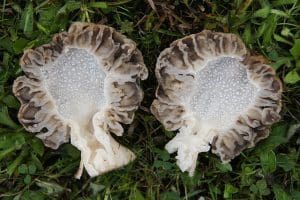
Stem:
White to yellow in colour, they have vertical striation that run the length of the stem. The stems are normally hollow and taper towards the base. Up to 12cm long.
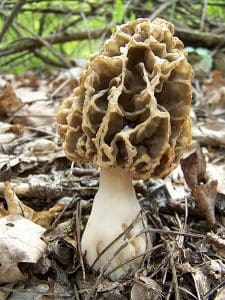
Gills:
They lack gills, the pits are lined with spore-producing asci, which release the spores into the wind.
Smell:
No strong aroma.
Spores:
White to cream.
Known hazards
They must be fully cooked before consumption as they are toxic raw.
If it is your first time trying them, you’re advised to taste a small piece and wait for 24 hours to see whether there are any adverse reactions.
Potential lookalikes
They are most often confused with other species of Morel, such as the Black Morel (Morchella elata) or the Yellow Morel (Morchella esculenta) both of these are both edible when cooked.
Until recently it was thought there were only 3 Morel species worldwide but thanks to DNA profiling they have now been split into different species.
Another lookalike could be the Stinkhorn mushroom (Phallus Impudicus) this has a pale stem and grey-brown cap, but isn’t pitted in the same way and absolutely stinks of rotten meat.
Be aware of the False Morel (Verpa bohemica), which has deep wrinkles on the cap but not the characteristic deep cups of the true Morels.
Uses
In food
They are much prized by chefs and have a lovely fungal flavour that intensifies when they are dried. They work particularly well I cream sauces but they can also be
stuffed and baked.
Notes on Herbal Uses
Morels in general are high in Iron, Copper, Manganese, Phosphorus, Zinc, Vitamin D, Folate, Niacin, Riboflavin, protein and fibre as well as Potassium, Magnesium, Calcium, Selenium, Thiamine, Vitamins E and B6.
Morels are also loaded with antioxidants, balance blood sugar, and repair liver-damage.
Extra Notes
The name Morel is thought to come from ‘morchel’, an old German word meaning ‘mushroom’ and vulgaris means common.
Reference:



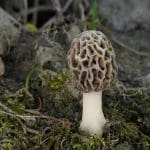
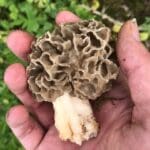
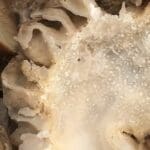
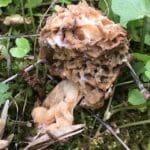



Leave a Reply
You must be logged in to post a comment.